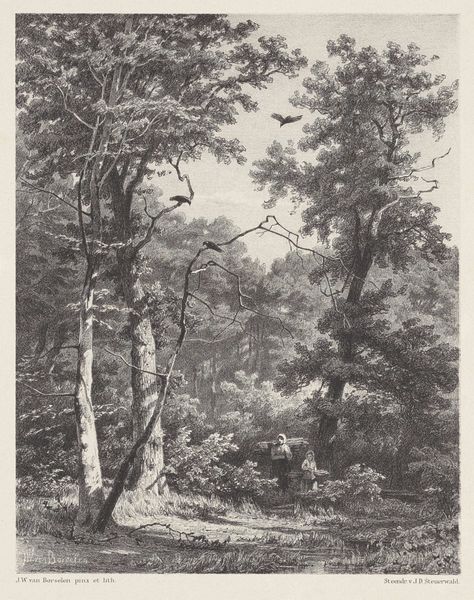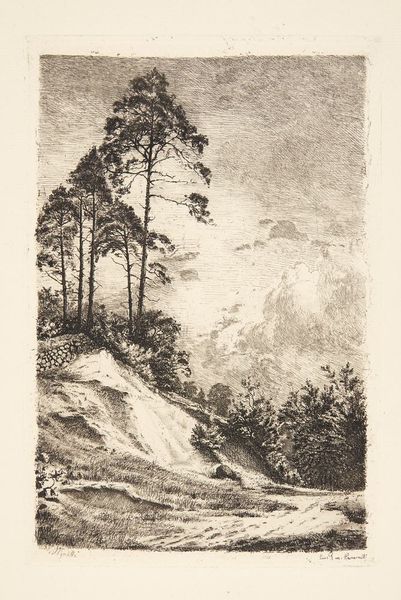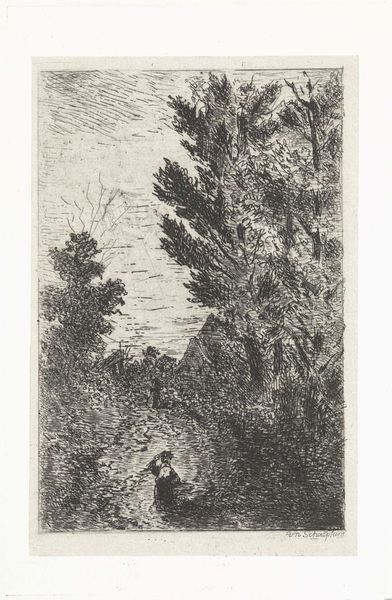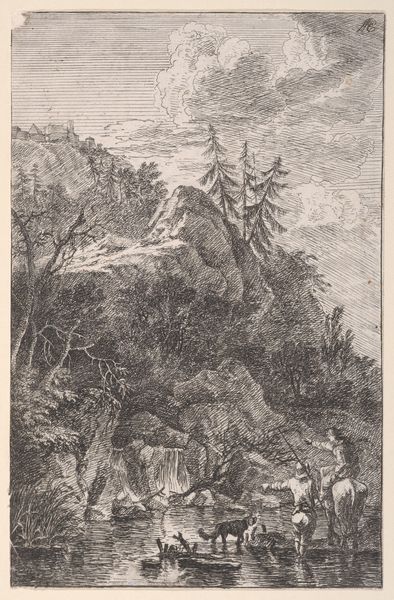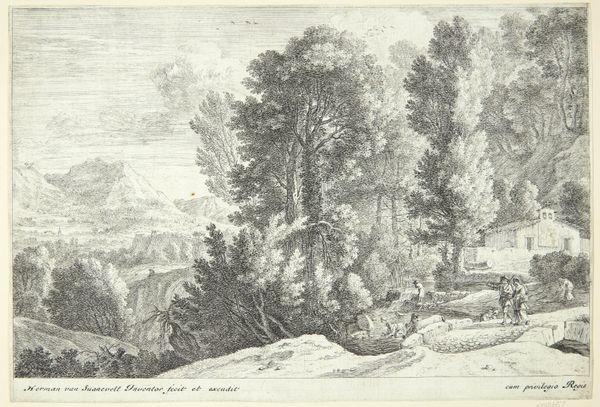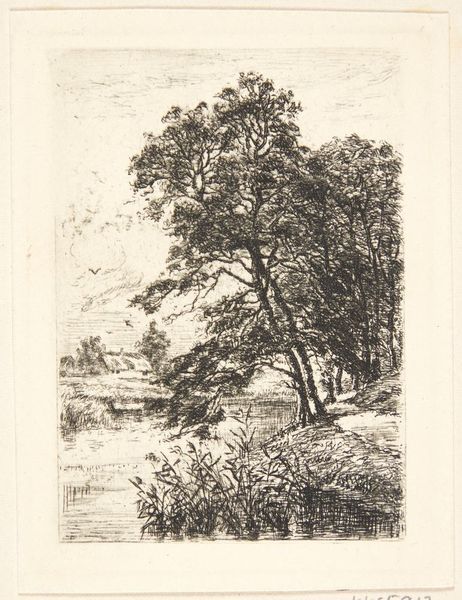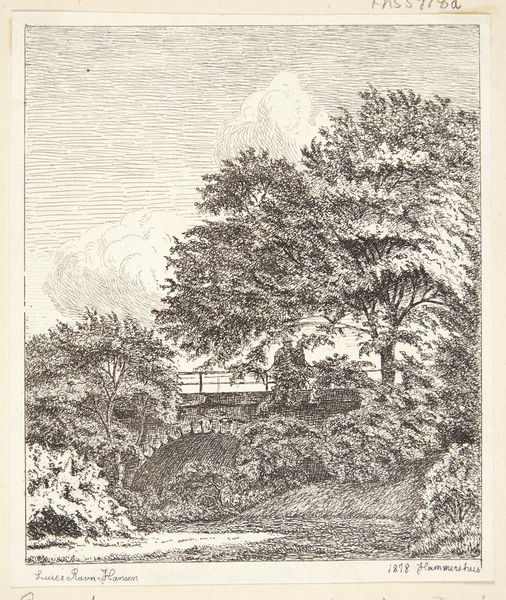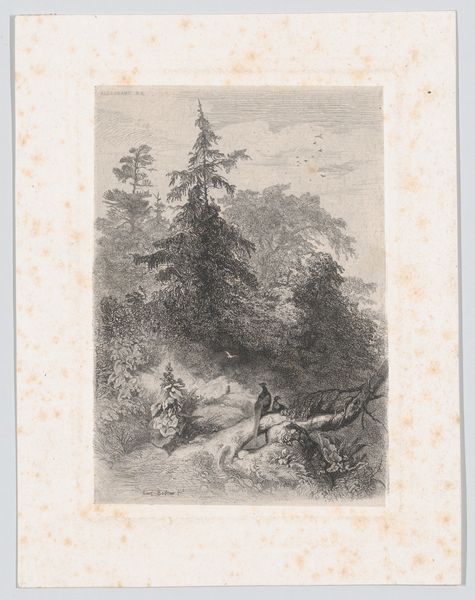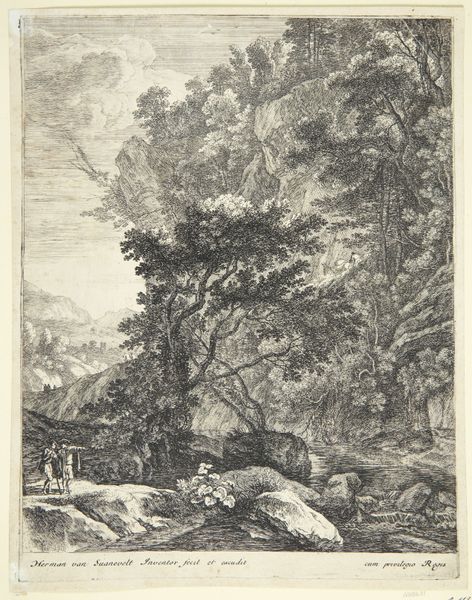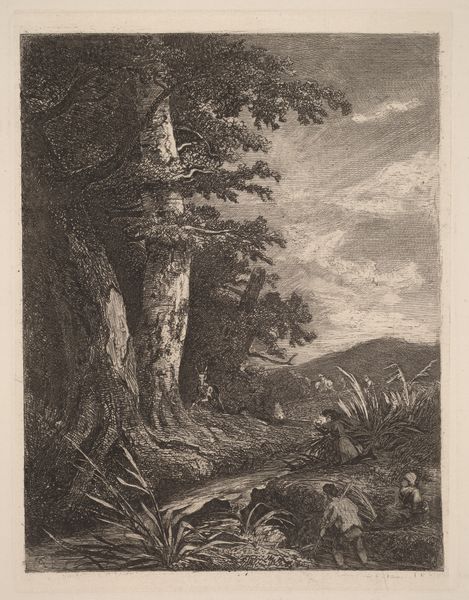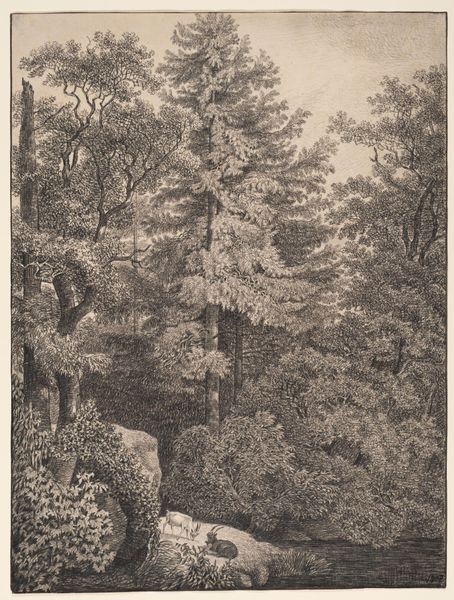
drawing, print, etching, ink
#
drawing
# print
#
pen sketch
#
etching
#
landscape
#
botanical illustration
#
ink
#
botanical drawing
#
realism
Dimensions: 64 mm (height) x 51 mm (width) (bladmål)
Editor: This is "Dyrehaven" by Louise Ravn-Hansen, created in 1882. It's an etching, so an ink print on paper, depicting a landscape. I'm struck by the density of the trees and how they seem to frame a hidden, almost dreamlike space. What do you see in this piece? Curator: Immediately, I see how Ravn-Hansen uses the trees as more than just landscape elements; they're symbolic gatekeepers. The Dyrehaven, or "Deer Garden," was a royal hunting park – but also a space of public access, even romance. What figures do we see in the clearing? Perhaps lovers meeting outside the bounds of societal structure, in the ‘wild’? Editor: There are figures! Almost hidden at the back, like spectators or intruders... Curator: Exactly! Are they the 'everyman'? Or perhaps they hint at our relationship to the wild? This work is from 1882 – think about the context. Industrialisation was booming, cities were growing… and the romantic yearning for nature was rising. How do you think this reflects in the work? Editor: That makes me wonder if the figures represent people reconnecting with nature. The landscape is idealized and also so accessible. I’m so curious to understand that relationship and that tension. Curator: Yes, a brilliant tension! Etchings like this provided a tangible and repeatable image of that experience; like possessing a memory, one to take and show and share in a new technological age! The trees here could be read as representative of our ancient need to experience "nature", that remains with us. I encourage everyone to look more closely at that symbolic tension – between accessibility, societal norms, and the ‘call of the wild’. Editor: I hadn't thought about how the print itself relates to that feeling of accessibility, such a good point. Curator: Thanks. Something to mull over perhaps? Editor: Indeed. I’ve learnt a lot; thanks.
Comments
No comments
Be the first to comment and join the conversation on the ultimate creative platform.

